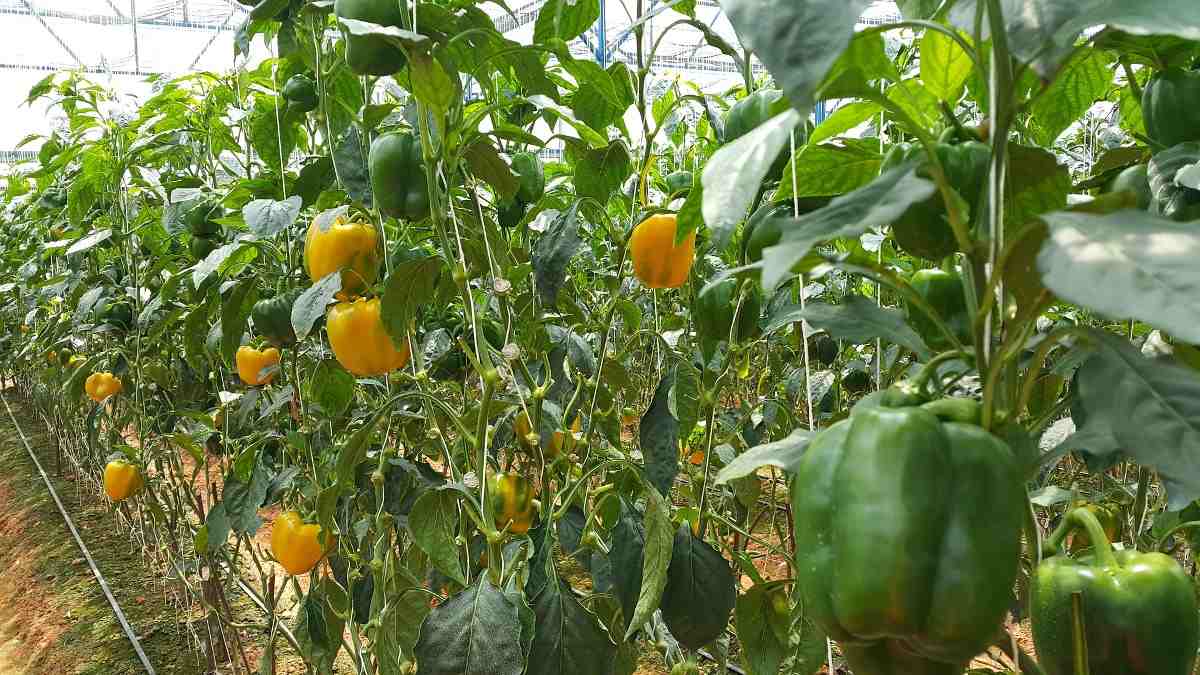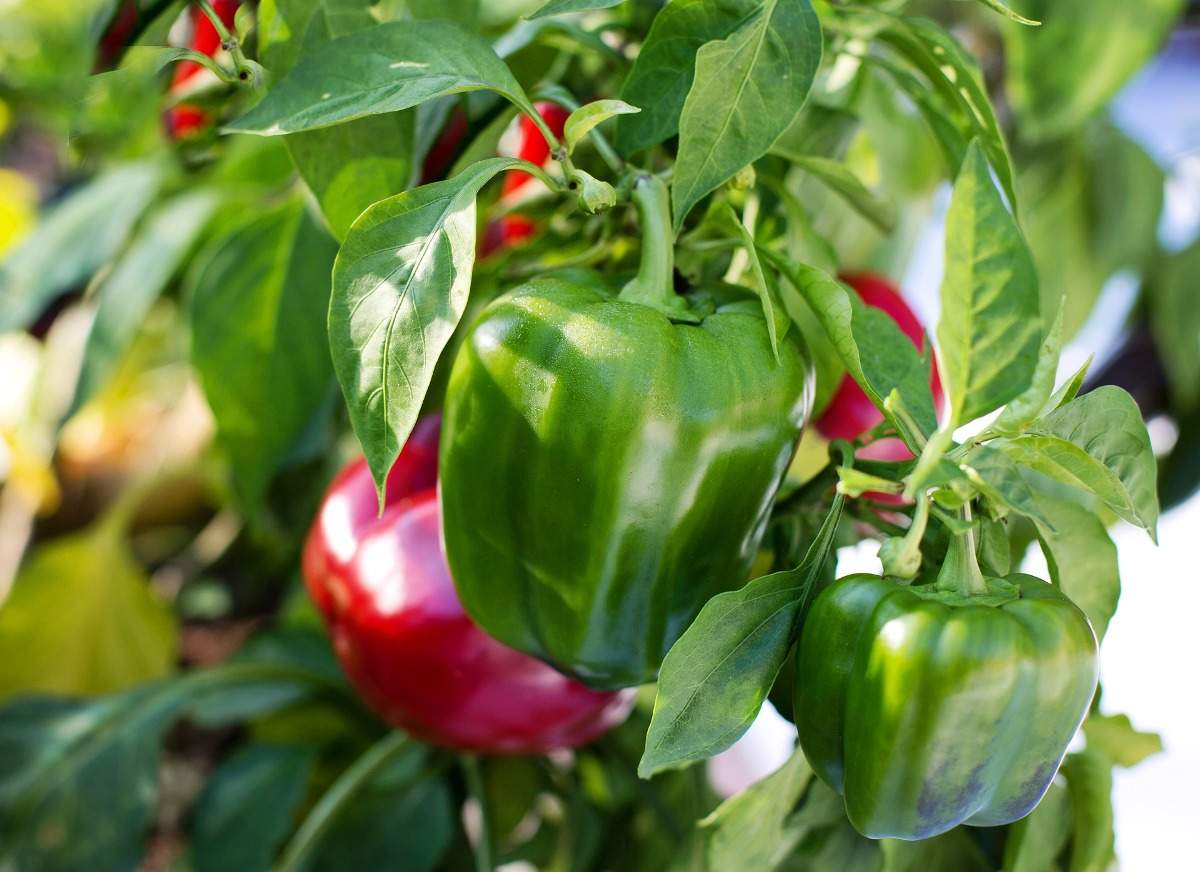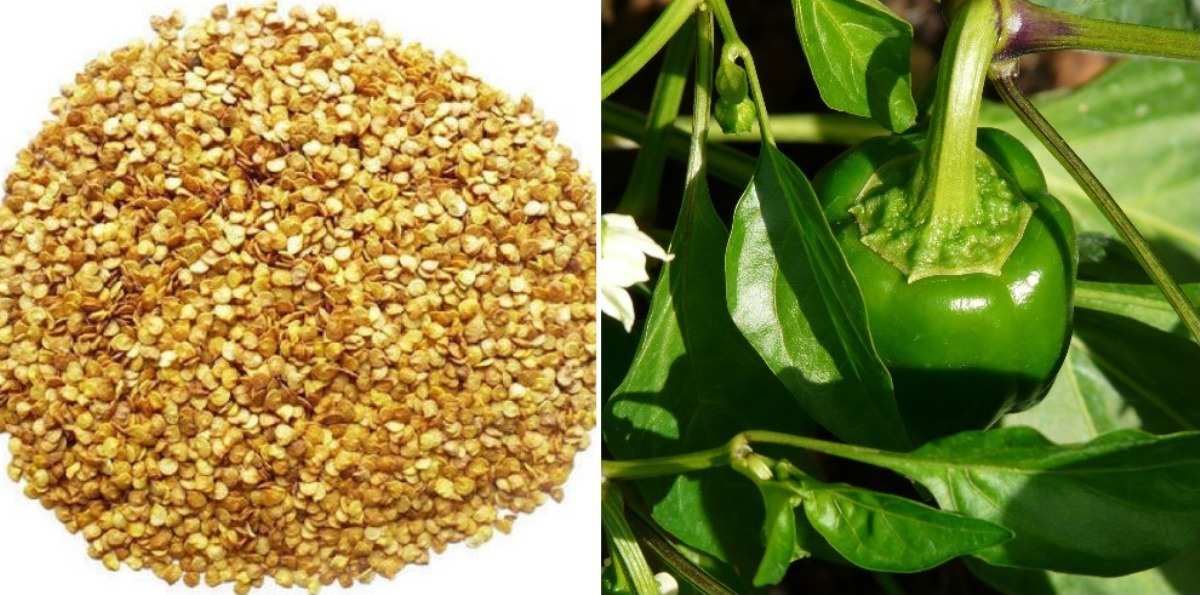Capsicum seed germination, time, period, temperature, process: Capsicums are very easy to grow vegetables that add color and flavor to salads, stews, and casseroles. They are rich in Vitamin C and other nutrients and come in all shapes and sizes with a wide range of colors. These are a popular vegetable to grow in warm areas as they are relatively quick to produce a crop, don’t require a lot of special care, and come in such a lovely range of colors. Capsicums are one of the most widely used vegetables across various countries. Capsicums botanically named as Capsicum annum, it is also known as Bell Pepper, Sweet Pepper, Paprika or Cayenne Pepper. In India, it is called the ‘Shimla Mirch’.
A guide to capsicum seed germination, time, period, process
Capsicum plant favorites include the different varieties are Target, Sweet Banana, Sweet Conical, Midas, Chocolate Beauty, Purple Beauty, and Californian Wonder.
There are different varieties of Capsicum vegetables that are green, yellow, red, white, and even orange and purple though these are rare in India. The red-colored Capsicums are called Bombay while the yellow and the green Capsicums are called the Orobelle and Indra respectively. In this article we also discussed below topics;
- The fastest way to germinate Capsicum seeds
- Process of growing Capsicum from seed
- Time to take Capsicum seeds take to germinate
- Capsicum seeds saving
- Capsicum seed germination time
- Capsicum seed germination temperature
- Process for germinating Capsicum seeds
- Capsicum seeds germination period
- Tips for Capsicum seeds germination
- Best times to plant Capsicum
- Germinate Capsicum seeds indoors
- Paper towel germination method for growing Capsicum
Capsicums are one of those multi-function vegetables. Capsicums are delicious raw in salads (where their vitamin C content is consumed fresh, yielding maximum effect); and they add a sweet piquancy to casseroles and soups.
Soil and sun requirement for growing Capsicum (Bell pepper)
Capsicum plants require light soil with good aeration. You can use a simple potting mix with a good dose of compost but if you are adding manure, leave the soil to sit for a week before sowing the Capsicum seeds.

Capsicum plants are heat-loving plants so place them in a sunny part with partial shade. About 3 to 4 hours of morning or evening sun makes for ideal growing conditions. If it gets too hot, the Capsicum plant may shed its flowers to conserve energy and you don’t want that happening.
Growing conditions for Capsicum (Bell pepper)
Choose a location that receives full sun but protection from winds that can break stems. Capsicums perform best in fertile free-draining soil, therefore, enrich the soil beforehand with aged manure, compost, and a certified organic fertilizer.
You should not miss the Organic Hydroponic Gardening.
Capsicums are commonly grown from seed or seedlings but sometimes you will also see small plants available at the nursery. Sow Capsicum seeds in a tray or punnet first and plant out when they are about 10cm tall. Capsicum plants like to be planted into warm soil so in colder areas wait until the last frost has passed before you plant. Water in new plants with eco-seaweed to help them settle in faster and mulch around them.

Light soil mixture
Capsicums are commonly started indoors 8 to 10 weeks before the last spring frost. Starting the Capsicum plants indoors allows you to control the growing environment more closely than in outdoor conditions, and give you hardy seedlings ready for the garden when the danger of spring frost has passed. Capsicum seed germinates best in a light, friable soil. A lightweight soilless medium will provide good drainage. The soilless mix must contain perlite or vermiculite to allow adequate oxygen in the media.
Spacing requirements for Capsicum (Bell pepper)
Plant seedlings 12 to 24 inches apart in the garden in rows at least 12 inches apart.
Plenty of moisture
Capsicum seeds require consistent moisture to soak through the seed coat and allow the germination process to begin. Soak the seed-starting medium thoroughly with warm water and allow it to drain before planting the seed about one-half-inch deep. And you can slow the evaporation rate of the medium by covering the containers with a layer of clear plastic wrap. Don’t place the wrapped containers in bright sunlight, but keep them in a warm, shaded area until seed germination.
Time to Capsicum seed germination
The Capsicum germination period typically lasts 14 to 18 days. For best germination, keep the soil between 75 and 80°F. The pots won’t need light until the seeds sprout. Capsicums typically require 14 days to germinate, but they may take as few as seven or as many as 21 days to sprout.
In case if you miss this: Growing Sweet Potato in Terrace.
Capsicum seed germination steps for the soil and tray method
Capsicum germinates and grows best when soil temperatures are above 75°F. In most regions of the country, Capsicum should be started indoors and then transplanted outdoors as the weather warms. Sow Capsicum indoors 6-8 weeks before transplanting. Plant seeds at a depth of ¼ inch and make sure the soil remains warm throughout the Capsicum germination period.
Before you start the stages of Capsicum germination, make sure you have everything you need to start germination;
- Gloves
- Water
- Seed Starting Mix of Choice
- Heat Mat
- Seed Germination Tray with Humidity Dome
- Light Source
Place your germination tray on the surface and pour about 6 cups of water. After adding the water, put your seed starting tray on top of the germination tray. Check to see if you have about ¼-inch of standing water in the tray. Then fill the seed starting tray with potting soil to the top. And make a ¼-inch hole in the center of each seed starting cell. Place the seed into about ¼-inch hole and cover gently with soil. Then plant 3 or 4 seeds per growing area.
Apply the seedling heat mat to the bottom of the tray and then cover the top of the seed starting tray with a humidity trapping dome. Maintain the seeds moistly, but not soaked, through the germination phase. Because most homes are not this warm, another tip is to place them on top of the refrigerator until seedlings emerge. And it stays pretty warm there. When seedlings start emerging, this is when it is the correct time to start transplanting.
Some seed varieties can be difficult to germinate. Be patient as some varieties can take 4 to 6 weeks to seed germinate. Others can show up in about 7 to 10 days. It mainly depends on temperature, sunlight, soil, and its variety.
Paper towel germination method for growing Capsicum
The paper towel germination method is one of the most functional and simplest methods for germinating Capsicum seeds. This process is used to speed up germination times when we want to grow species that take a long time to mature (about 120 days).
In this phase, the temperature must not fall below 15 to 20 degrees and must not exceed 30 degrees. If the temperature remains constant the Capsicum seeds will sprout in a week. You can help keep a constant temperature by placing your container inside a cardboard box, for example, not much larger than the container itself with a heat source and monitor the temperature range with a thermometer. As a heat source and a normal light bulb will do. Then play around with providing more air or less air based on the temperature that thermometer reads.
Just lay a paper towel on the counter and spray or mist to dampen, then place Capsicum seeds about 1-2 inches apart in a grid on half of the paper towel. Fold over, then spray or drizzle more water to obtain the towel fully damp. Then, you can put the paper towel into a glass or plastic container with a lid or a zip lock bag to maintain it moist. Put in a warm area (80-90˚) with moderate light (not full sun). Make sure the towel stays damp, and then leave a little opening in the container or bag so a little air can get in. Once you see sprouts, you can tear the seedling with the paper towel and plant it in good seedling potting soil, or, if desired, remove the seedling from the paper towel and press into soil. With this paper towel germination method, you don’t have to worry about the seeds drying out before they sprout.
Sowing and transplanting your Capsicum seeds
Plant your Capsicum seeds in pots then it is easy to transplant. Your seeds will not germinate until the temperature of the soil is right. They prefer a temperature of around 20 to 25°C before they will break dormancy, and they should not be planted outside until all chance of frost is over.
You may also like this: Okra Seed Germination, Time, Temperature, Light.

If you want to start them a few weeks before the expected date of your last frost you can plant the Capsicum seeds in pots and place them inside on a warm, sunny windowsill. Start with a pot or tray of good seedling mix from the garden center (not ordinary garden soil from your backyard). Give them a little water, just enough to maintain the soil damp, but not too wet.
The Capsicum plant bears fruit annually and a single plant can grow 4 to 6 units at a time. The soil must be loamy and well-drained, neither too wet nor too dry. And it can be a mixture of three equal parts of cocopeat, vermicompost, and sand. The seeds must be sprinkled half a cm deep in the soil and covered with the same. Make sure to maintain the surface damp yet not too wet. The soil must be well-fertilized with manure, garden compost, cooked tea leaves, and straw.
When and how to water Capsicum (Bell pepper) plants
Water the Capsicum plants consistently or you could end up with blossom end rot. Overwatering or under-watering should be avoided at all costs.
Capsicum seed transplanting
The seedling having attained 4 to 5 leaves should be transplanted. The nursery beds must be irrigated before the lifting of seedlings. The seedlings are transplanted in rows in the evening or during the cloudy day followed by plant irrigation. Normally, 50 to 60 days old seedlings are used for transplanting. The seedlings are transplanted in rows at a distance of about 30 to 60 cm depending upon the area and the variety. Rows spaced at 90 cm and plants spaced at 40 to 45 cm are fairly common.
Manures and fertilizers for growing Capsicum
About 50 to 80 cartloads of FYM, 30 to 55 kg of nitrogen in the form of ammonium sulfate or urea, 50 to 110 kg of phosphorus in the form of superphosphate and 75 to 100 kg of potash should be given depending upon the fertility status of the soil. The complete dose of farmyard manure must be applied in the soil at the time of first plowing. Potassium and phosphate fertilizers must be mixed in the plant rows. Then the nitrogenous fertilizer is given two and half a month after transplanting.
Pests and diseases of Capsicum (Bell pepper)
There are a few pests and diseases of Capsicum plants. Most bugs can be picked off by hand or sprayed with a mixture of detergent and water. If your Capsicum plants wilt and die unexpectedly and you are sure that they have received enough but not too much water, they might be infected with a serious wilting disease.
The major pests that attack Capsicums are aphids and whitefly. Aphids are little bugs that suck sap from the tips of the plant shoots and whiteflies are tiny white bugs that fly around when you disturb plants. Aphids can be controlled with pyrethrum spray or soapy water and whitefly could be caught on pieces of bright yellow card coated with a thin layer of petroleum jelly. They are both pests that can damage Capsicums and spread diseases.
Capsicum harvesting process
The stage of maturity at which Capsicums are picked mainly depends on the purpose for which they are grown. For the market, the large sweet Capsicums are generally picked at the green or colored (usually red) mature fruit stage. Capsicums for processing or drying are allowed to mature to their full color. When harvesting Capsicums, care must be taken not to injure the plants, as the stems are brittle and will snap off very easily. A picking knife could help in removing fruit safely.
Capsicums usually begin flowering 1 to 2 months after planting and will take up to around 110 days from planting to the first harvest which then continues until cold weather reduces yield or frost stops growth. An average Capsicum yield is around 18 tonnes per hectare. Capsicums are generally packed in 6 kg and 12 kg cartons or the standard black supermarket crates if being sent directly to the supermarkets.
Saving Capsicum seeds
Harvest seeds from Capsicums after the fruit has fully ripened on the plant and started to wrinkle. Then remove the seeds from the Capsicum and spread them out on paper towels to dry. When fully dry, store in an envelope in a cool and dry place.
Seeds must be stored in individual envelopes, in an airtight container and a dry place above ground level. This prevents moisture from spoiling the Capsicum seeds or animals such as mice eating their way through your supply. It is very important to label your seeds correctly, including the name, variety, and date you collected them.
That’s all folks about the germination of capsicum seed and you might be interested in Post Harvesting Technology of Vegetables.